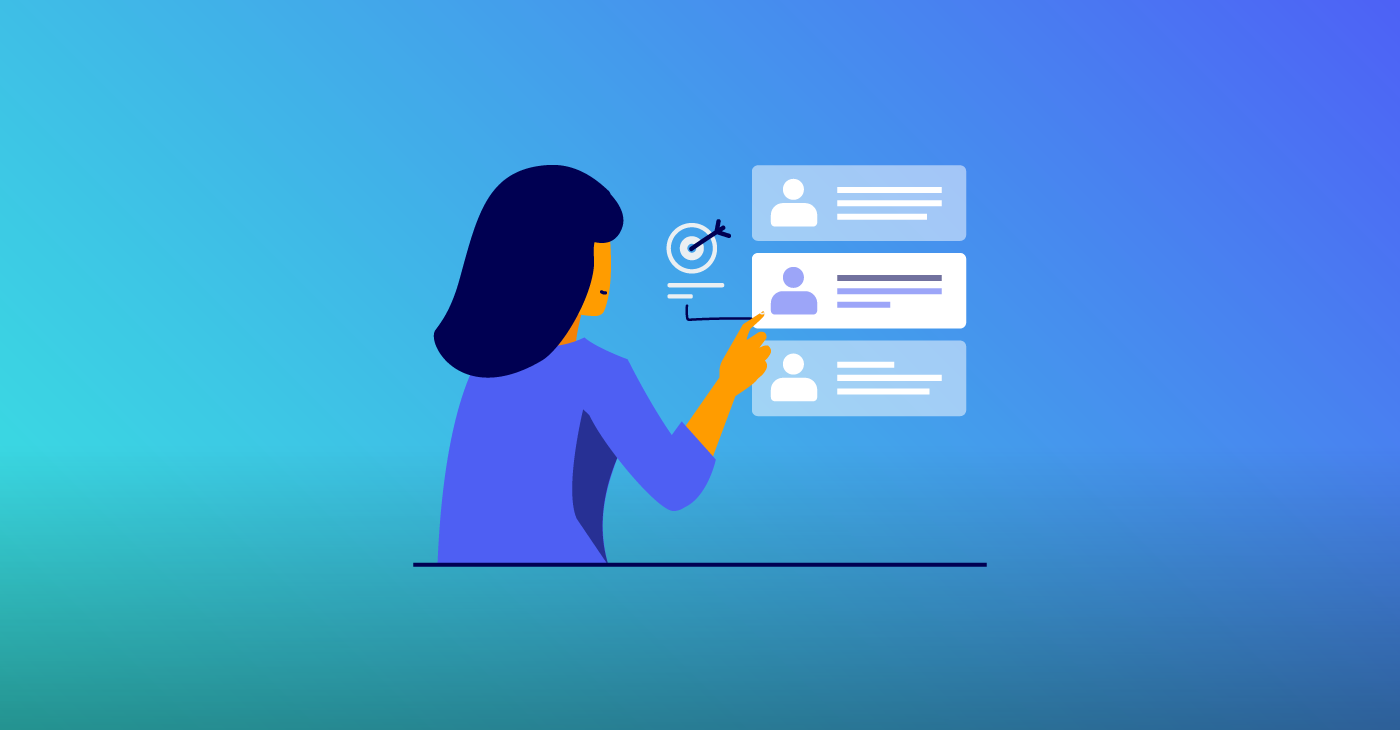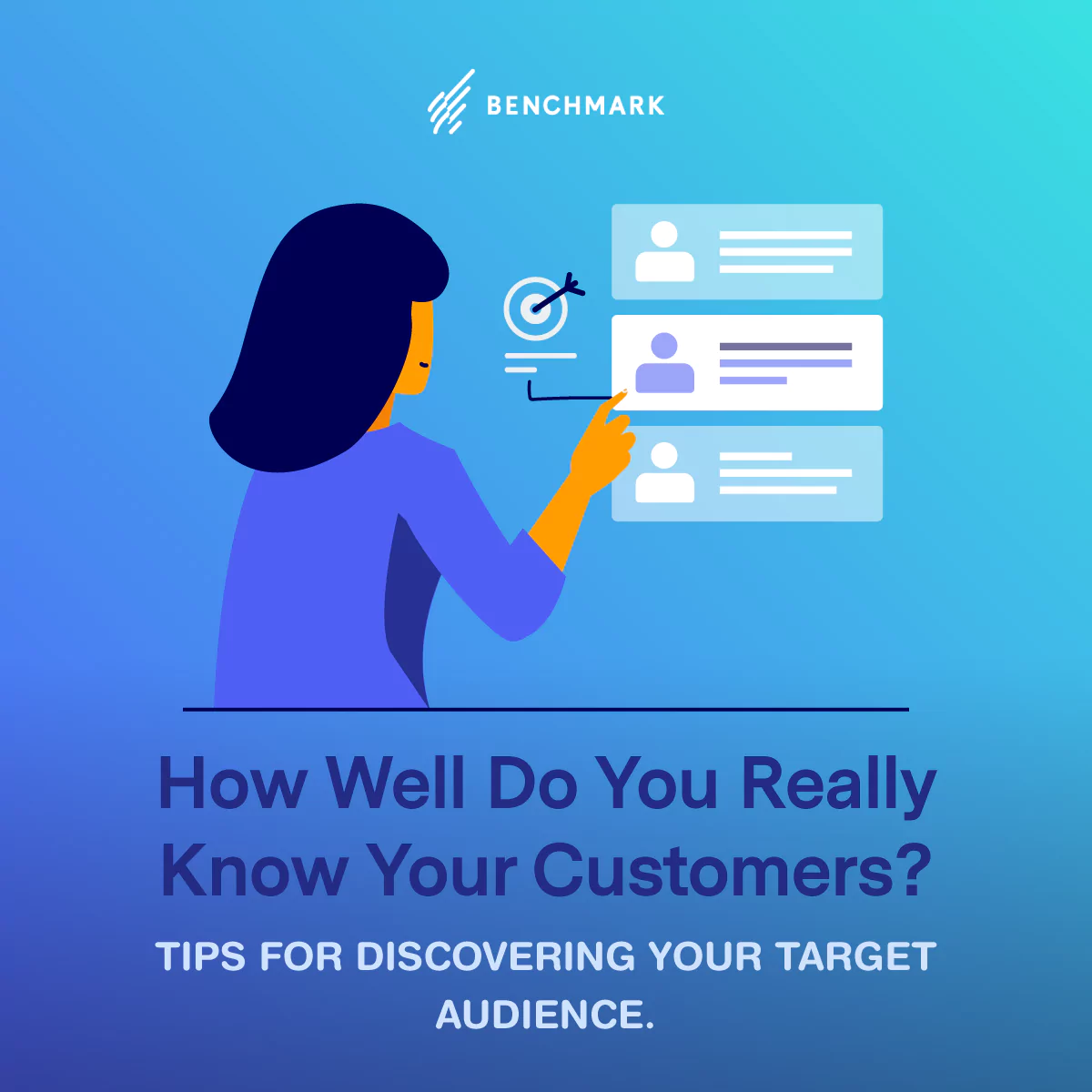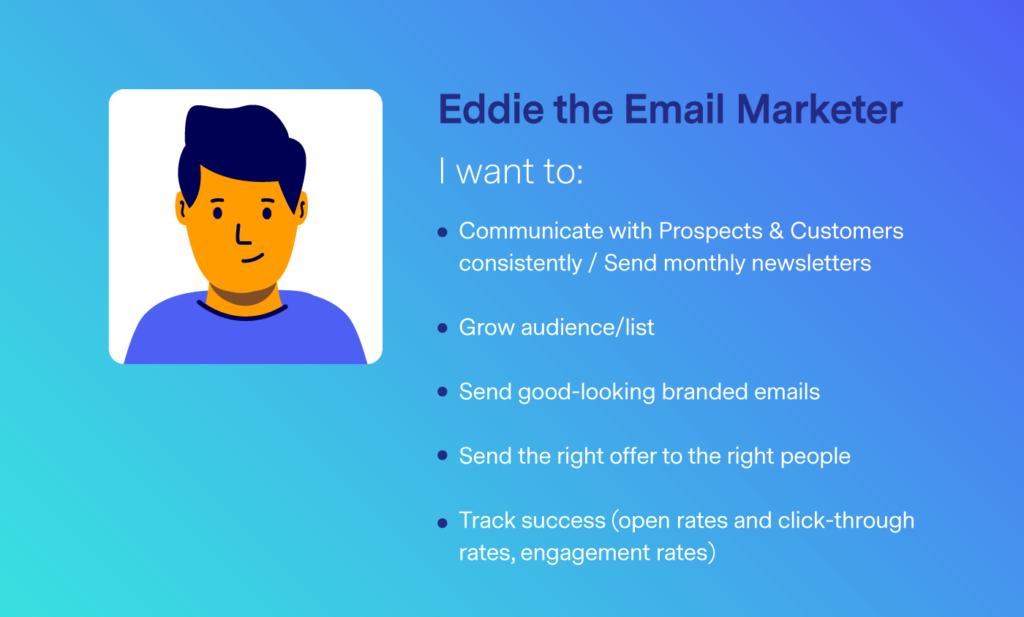How Well Do You Really Know Your Customers? Tips for Discovering Your Target Audience.
February 22, 2022 7 min read

Knowing who you’re selling to is just as important as knowing what it is that you’re selling. And while you may think that you understand your target audience like the back of your hand, as strategies change and businesses grow, so do their audiences. Next thing you know, your ideal audience is no longer who you’re targeting, and you’re wondering why your marketing and sales efforts aren’t excelling the way they used to.
To stay on track, it’s important to regularly audit your buyer personas to make sure that who you think you’re selling to is accurate and aligned with your goals. Below, we’re going to go over the basics of why knowing your target audience is so essential — plus tips for figuring out exactly who they are.
What is a Target Audience?
Your target audience is the people that you’re trying to reach with your marketing messages. This likely won’t include everyone: as you assess who your likely customers are, you might consider demographics like age, gender, geographic location, and interests. A buyer persona takes this even further by helping to create an actual character or profile that embodies the typical traits of your target audience.
Having a defined target audience will ensure that communication is focused, meaningful, and effective; otherwise, you risk coming off as generic or irrelevant, which won’t resonate with your desired prospective customers.
What’s the Difference Between Target Market and Target Audience?
Knowing the difference between target audience and target market is key to getting the most out of your advertising strategy. Your target audience is made up of a specific group of people that you’re trying to reach. For example, men ages 18-34 or stay-at-home moms.
On the other hand, your target market is the places where those people are likely to be. Examples could include gyms, luxury clothes stores, or sports bars. Identifying your target market is important because it allows you to hone in on areas where they’re likely to spend money and engage with your product. That way, you can maximize your marketing budget and ensure that you’re investing in opportunities with a higher chance of success.
Types of Target Audiences
Generally speaking, there are three main types of target audiences: primary, secondary, and tertiary.
- A primary target audience consists of the group of customers who are most likely to make a purchase.
- Secondary target audiences are those who may occasionally purchase a brand’s product or service but not as regularly as the primary audience.
- Tertiary target audiences represent individuals who may be interested in what a business offers but are unlikely to commit to buying it right away.
Knowing how to recognize the different types of target audiences based on factors like age, gender, and location can help you to reach your desired market more effectively.
Why Is Knowing Your Audience Important for Email Marketing?
When you know your target audience, it means you understand their problems, needs, interests, and preferences. A deeper understanding of your customer makes it easy for you to segment them based on various attributes. By tailoring content specifically to the interests and needs of your target audience, you can make sure they land on your site and increase the chance that they will convert to subscribers and even customers.
Studies have shown that personalized emails garner 2.5 times higher click-through rates and are six times more likely to increase conversion. Moreover, personalized emails deliver 20% more sales opportunities than non-personalized campaigns.
When crafting any type of email or ad campaign directed at growing your email list, always keep the target audience’s wants and needs in mind. This is the key bit of information that will help guide all of your marketing actions!
Why Your Target Audience Might Change
There are a couple of big reasons why your target audience might change over time. Here are a few of them:
- You expanded. If you added new products, features, or services to your lineup, then there’s a big chance you added new potential prospects as well.
- Your audience is too narrow. It’s fine to start narrow, but as you grow your resources, you’ll have more opportunities to broaden your horizons and reach for additional prospect pools.
- Your audience is too broad. On the opposite end, it’s also possible you started too broad and now need to narrow in your focus using the data you’ve gathered along the way.
Other possible reasons for a new target audience include tapping into demographics that you either didn’t previously consider as a target or realizing that certain people you thought would make good prospects are harder to convert than anticipated. In any case, it’s always a good idea to regularly hit the drawing board with your target audience and evaluate whether a change is in order.
Chat with your sales and marketing teams to see what kinds of people are entering your funnel. See who your sales team is reaching out to and engaging with most. Also, consult your support team to see who your best clients are. These will help you determine if your target audience is on point or needs adjusting.
How to Identify Your Target Audience
The best way to define your target audience is to ask (and answer) some questions about who your brand is, what you’re trying to achieve, and who you’re currently having the most success connecting with.
Analyze Your Products or Services
Use reverse engineering to identify your target audience. Examine your product or services and pinpoint the specific problems it solves. Look around and find the people that are facing these problems.
Exploring the characteristics of these people will give you a hint of who your target audience is or should be. However, using this strategy might not give you sufficient data to define your target audience. This is where our second strategy comes in handy.
Compile Data on Your Existing Customer
If you already have a customer base, chances are the data you have on hand can help your audience research efforts. Compile data from sources such as customer relationship management (CRM) software, email lists, customer purchase history, and product reviews.
To better understand your target audience and build more accurate buyer personas, the customer data should cover the pillars of segmentation. In other words, you should have details about customers’ psychographics, geographics, demographics, and behavioral data.
Internal sources of data are treasure troves for demographics and behavioral data. To add psychographics and geographics data, use online analysis, surveys, reviews, and customer interviews. Customer psychographics includes:
- Activity, interest, and opinion
- Personality
- Lifestyle
- Attitudes
- Values
- Concerns
Study Competitors
Scope out your competitors and pinpoint who they sell to. Do they focus on decision-makers or employees? Can you pick up on some traits that their customers share? Do the brands use online or offline channels? The answers to these questions will guide you as you build buyer personas out of the data you’ve gathered.
Turn Data into Buyer Personas
The data you have about the customer is like clay to a potter. The data is jumbled: you have to organize and shape it to create accurate buyer personas.
Look carefully through the data sets for commonly shared patterns such as interests, career, lifestyle and hobbies, buying habits, income, content preferences, and more. If there’s a trait that stands out among customers, that’s a hallmark of your ideal target audience.
Identify these traits and build out a fictitious profile of a customer most likely to buy your product or service. Use that as your buyer persona, but stay flexible: your customers’ needs and wants are likely to change every few months, so it’s good to reevaluate your personas regularly.
Keep in mind that you may have multiple buyer personas since even a narrowly defined target audience will be made up of various types of people. Each buyer group should be represented by a fictional character that sums up the key features of that particular type of customer. That can be used for reference as you create content and allocate your ad spending.
Regularly check in for updates to your target audience and personas. The answers to the questions above are going to evolve as your brand does. If you don’t evolve the characterization of your core audience with them, you’ll end up with inefficiency in your sales and marketing endeavors — plus a lot of missed opportunities.
So there you have it. By taking the time to define your target audience as best as you can, you take a big step toward successfully marketing your product or service. Data is your friend, especially when it’s backed by real-world efforts to substantiate and make use of everything you discover. Dig into trends around who your audience is and what they most respond to — the more you can understand about them, the more you’ll be able to make connections that count.








